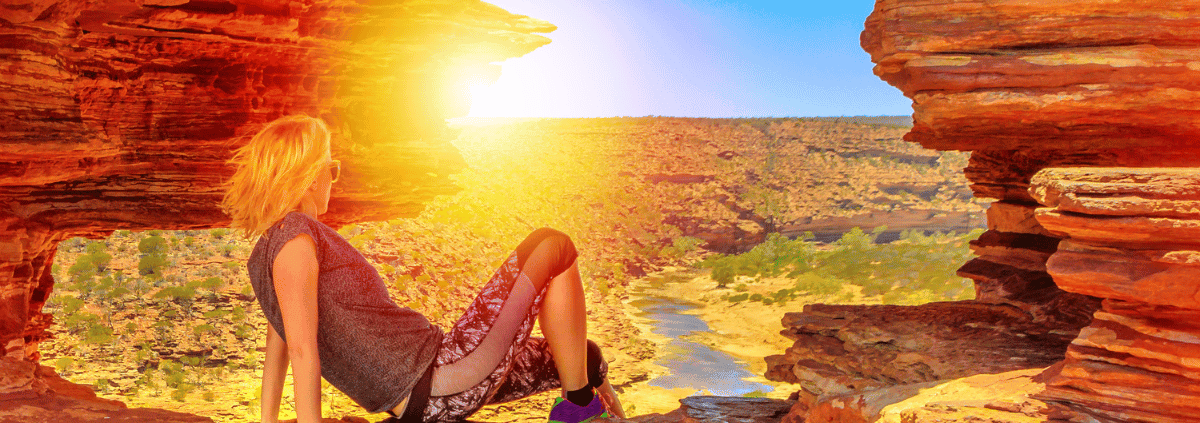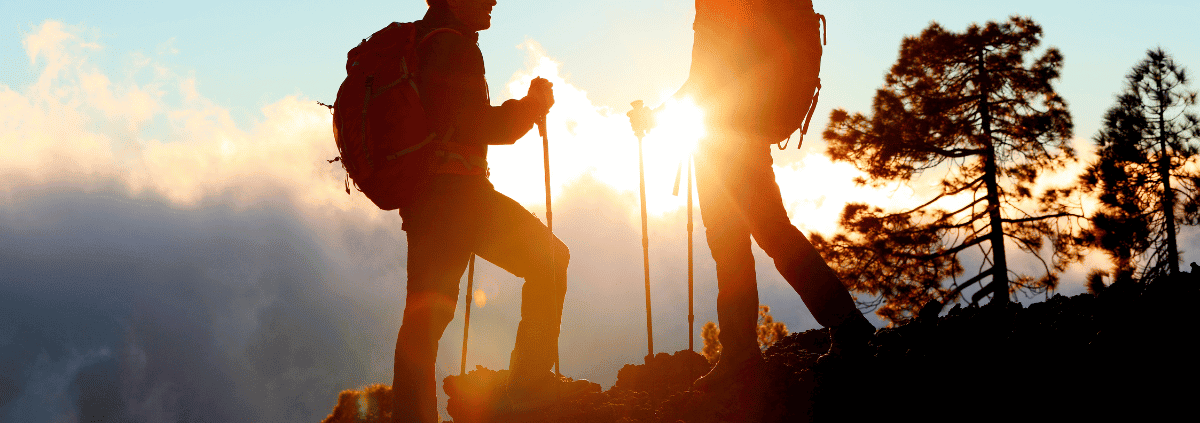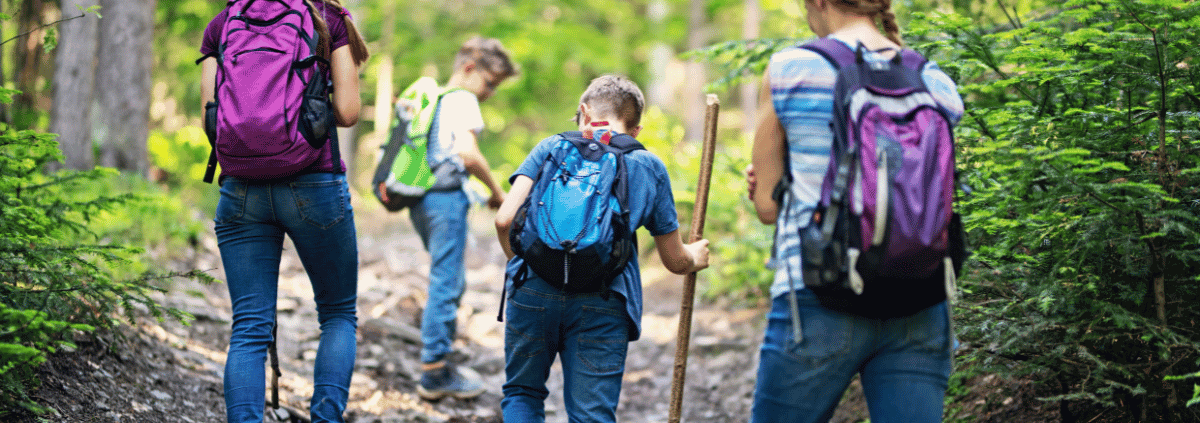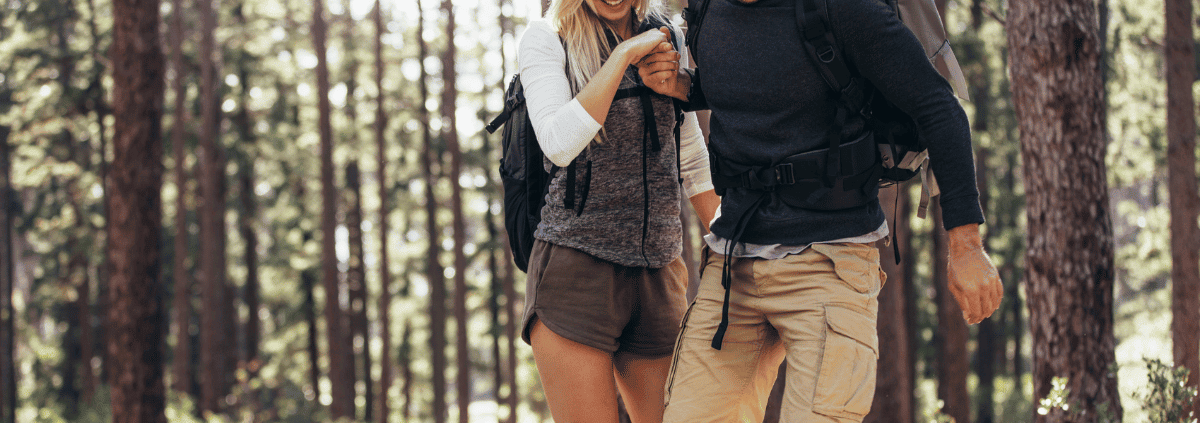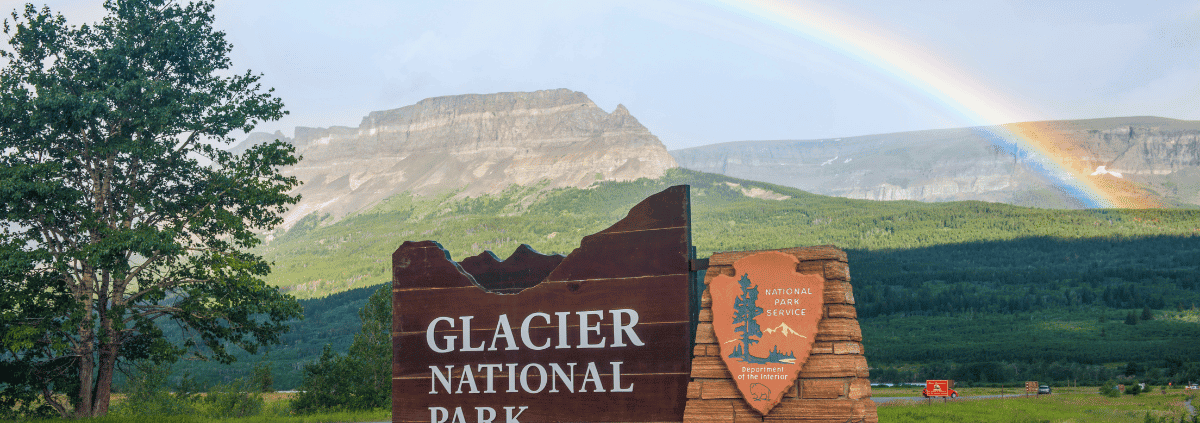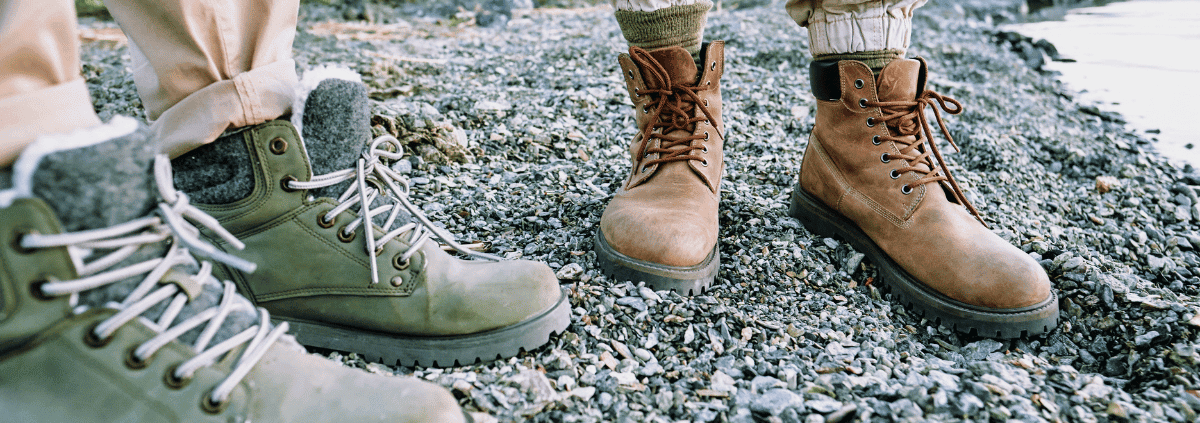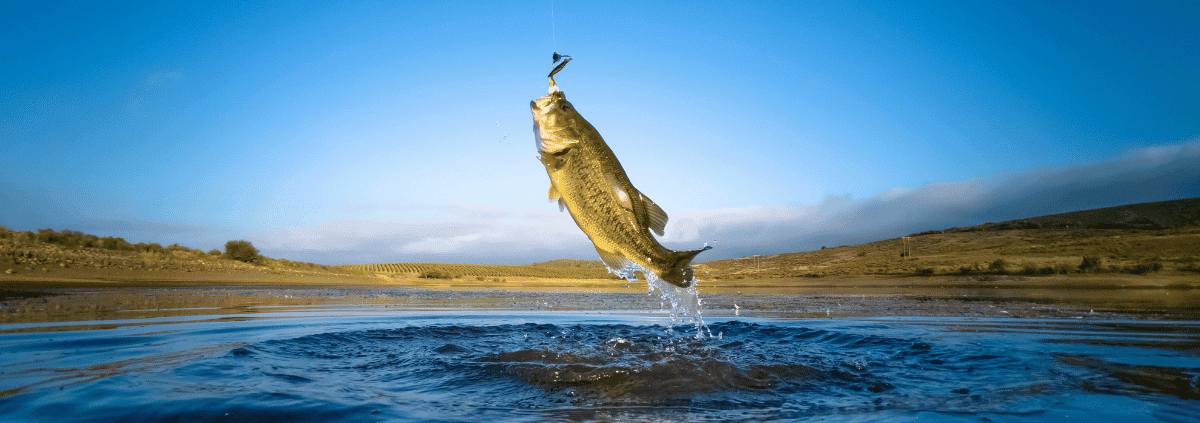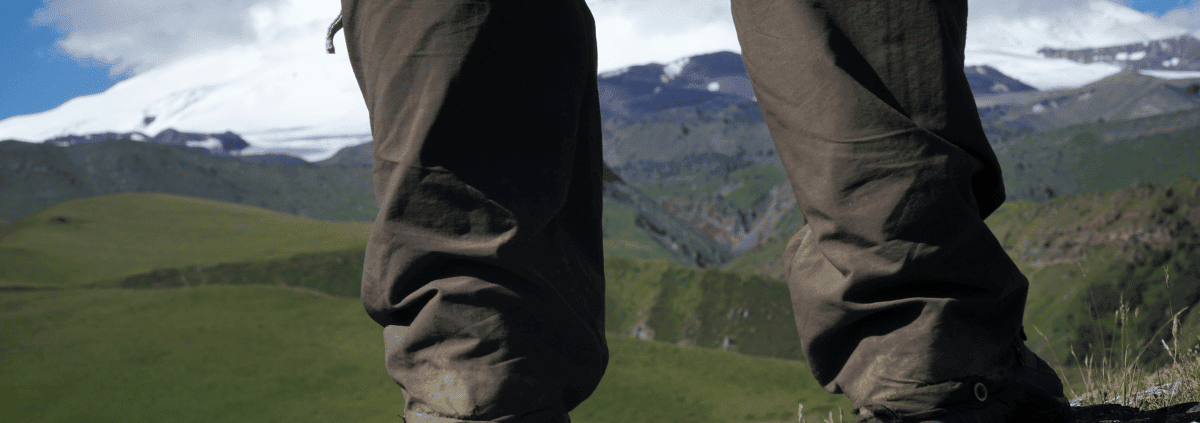Planning a hike in Australia? Did you know that the country’s wilderness is home to a variety of unique dangers? From venomous snakes and deadly spiders to toxic plants and aggressive kangaroos, Australia’s natural environment presents challenges for hikers.
Equipping yourself with the right knowledge and gear can make all the difference in ensuring a safe and enjoyable experience. In this guide, you’ll discover the top 15 hazards to watch out for while hiking in Australia and learn essential safety measures to protect yourself.
So, lace up your hiking boots, grab your gear, and get ready to explore the stunning landscapes while staying one step ahead of the dangers that await in the Australian wilderness.
Key Takeaways
- Australia is home to various wildlife dangers, including venomous snakes, deadly spiders, harmful insects, poisonous cane toads, and venomous lace monitors.
- There are several plant dangers in Australia, such as the Gympie Gympie Tree, Oleander, Angels Trumpets, Milky Mangrove, Orange Thorn, and Poison Ivy, which can cause pain, sickness, or skin irritation.
- It is important to have the right hiking gear, including a hat, long-sleeved shirt, long pants, hiking boots, sunscreen, and insect repellent, to protect against the sun, scratches, insect bites, and plant toxins.
- Essential hiking essentials include water, a first aid kit, map and compass, snacks, and a headlamp, to stay hydrated, prepared for emergencies, navigate, and provide energy during the hike.
Wildlife Dangers
You should be aware that 100 out of 140 land snake species in Australia are venomous, making snake encounters a potential wildlife danger while hiking.
When exploring hiking trails in Australia, it’s crucial to be cautious and informed about the best time to hike. Typically, autumn (March to May) and spring (September to November) are the best times to hike due to milder temperatures and fewer insect and snake encounters. However, it’s essential to remain vigilant year-round.
Always wear appropriate gear such as long pants and hiking boots to protect against potential hazards. Additionally, carrying a first aid kit and staying on marked trails can significantly reduce the risk of encountering dangerous wildlife.
Venomous Snakes
Familiarize yourself with the identification of the top five venomous snakes commonly encountered while hiking in Australia.
| Snake | Description | Safety Tips |
|---|---|---|
| Eastern Brown | 2nd most venomous land snake, aggressive when cornered | Back away slowly if encountered |
| Inland Taipan | Most venomous snake in the world, shy and reclusive | Do not make sudden movements near its habitat |
| Coastal Taipan | Highly venomous, fast-moving snake | Wear protective footwear and stay on designated paths |
| Tiger Snake | Venomous and aggressive when threatened | Avoid provoking or approaching |
| Red-bellied Black | Venomous but typically shy and placid | Keep a safe distance and do not attempt to handle |
Deadly Spiders
When hiking in Australia, be cautious of deadly spiders, which can pose a significant threat to your safety. The redback spider, funnel-web spider, and mouse spider are among the most dangerous species you may encounter.
To stay safe, take preventive measures such as shaking out your shoes and clothing before wearing them, and using gloves when reaching into crevices or under rocks. If you’re bitten by a spider, it’s crucial to seek immediate medical attention.
Apply a pressure immobilization bandage to the bite site to slow the spread of venom, and keep the affected limb still. Remember to stay calm to prevent the venom from spreading quickly.
Being prepared and educated about first aid measures can make a crucial difference in such situations.
Harmful Insects
Equipping yourself with effective insect repellent is essential to protect your skin from potential harm while hiking in Australia. Identifying and avoiding harmful insects is crucial for a safe outdoor experience. Here are some tips for dealing with insect hazards:
| Insect | Potential Harm |
|---|---|
| Ticks | Carry diseases such as Lyme disease |
| Leeches | Can cause bleeding and infections |
| Centipedes | Their bites can be painful |
To stay safe, wear light-colored clothing to spot insects easily, tuck your pants into your socks, and apply insect repellent containing DEET. Check yourself regularly for ticks and remove them promptly. If bitten, clean the area thoroughly. Additionally, be cautious around fallen logs and rocks where insects may hide. Stay alert, stay protected, and enjoy your hike in the beautiful Australian outdoors!
Poisonous Cane Toads
To avoid potential encounters with poisonous cane toads while hiking in Australia, always stay vigilant and watch your step.
Cane toads, found in Queensland and Northern NSW, secrete a toxin that’s poisonous to wildlife and humans. Their impact on Australian wildlife has been detrimental, as they’re known to prey on native species and compete for resources.
To control their population, various measures have been implemented, including physical removal, traps, and the use of biological controls.
When hiking, be cautious around bodies of water and moist areas where cane toads are commonly found. If you come across a cane toad, don’t handle it, as their toxin can be harmful.
Venomous Lace Monitors
While hiking in Australia, being cautious around venomous lace monitors is crucial to ensuring your safety. These large lizards have a venomous bite and sharp claws, so it’s important to understand their behavior and habitat to avoid potential encounters. Here are some essential tips to help you stay safe:
Recognize their habitat: Lace monitors are often found in forests, coastal tablelands, and urban areas.
Keep your distance: If you spot a lace monitor, maintain a safe distance and avoid provoking or approaching them.
First aid tips for lace monitor bites: Clean the wound thoroughly, apply antiseptic, and seek medical attention immediately.
Be vigilant around food scraps: Lace monitors are attracted to food, so secure your snacks and dispose of waste properly.
Stay informed: Learn about the local wildlife and their behaviors to be better prepared for your hike.
Aggressive Kangaroos
How can you effectively handle encounters with aggressive kangaroos while hiking in Australia? Kangaroo encounters can be intimidating, but by understanding their behavior and taking appropriate actions, you can ensure your safety. When facing an aggressive kangaroo, it’s crucial to remain calm and avoid making sudden movements that could further agitate them. Here are some tips for dealing with aggressive wildlife:
| Dealing with Aggressive Wildlife |
|---|
| 1. Keep your distance. |
| 2. Do not turn your back. |
| 3. Slowly back away. |
| 4. Use a barrier if available. |
| 5. Seek higher ground. |
Following these guidelines will help minimize the risk of confrontation and allow you to safely continue enjoying your hiking adventure in Australia. Remember, respecting wildlife and their habitats is essential for a harmonious outdoor experience.
Plant Hazards
When hiking in Australia, you should be aware of various plant hazards that can pose risks to your safety and well-being.
Gympie Gympie Tree: Recognizable by heart-shaped leaves with fine hairs that cause excruciating pain on contact.
Oleander: Identified by its clusters of colorful, tubular flowers and toxic leaves.
Angels Trumpets: Large, trumpet-shaped flowers contain alkaloids that can be harmful if ingested or make contact with skin or eyes.
Milky Mangrove: Identified by its glossy green leaves and clusters of small white flowers; contact with its sap can cause dermatitis.
Orange Thorn: Recognizable by its sharp thorns and small orange berries; thorns can cause injury and infections.
Proper clothing and gear are crucial for protection. Wearing long-sleeved shirts, long pants, and sturdy hiking boots can help shield against scratches, insect bites, and potential plant toxins.
Stay informed and prepared to enjoy your hiking adventure in Australia safely.
Gympie Gympie Tree
During your hike in Australia, you should be cautious of the Gympie Gympie Tree, known for its stinging hairs that can cause excruciating pain and allergic reactions upon contact.
Painful encounters with the Gympie Gympie Tree occur when the tiny silica-tipped hairs on its leaves and stems penetrate the skin, releasing a potent toxin. The intense pain can last for weeks or even months, and allergic reactions may include swelling, itching, and difficulty breathing.
If you come into contact with this hazardous plant, avoid rubbing the affected area and seek immediate medical attention.
To prevent such encounters, stay on marked trails, wear protective clothing, and be mindful of your surroundings.
Toxic Oleander
You should also be cautious of the toxic oleander, as every part of this plant is highly toxic and can cause serious sickness if ingested.
Oleander Toxicity: The plant contains toxic compounds such as oleandrin and neriine, affecting the heart and gastrointestinal system.
Symptoms and Treatments: Ingestion can lead to nausea, vomiting, irregular heartbeats, and potentially fatal outcomes. Immediate medical attention is crucial.
Prevention Measures: Avoid contact with the plant, wear gloves when handling it, and ensure children and pets stay away from it.
Oleander Poisoning Cases in Australia: Despite being a common garden plant, oleander poisoning cases are relatively rare in Australia.
Statistics and Precautions: Understanding the symptoms, seeking medical help, and raising awareness about the plant’s toxicity are essential for preventing oleander poisoning.
Angels Trumpets
Avoiding contact with Angels Trumpets while hiking in Australia is crucial for staying safe due to their toxic alkaloids. These trumpet-shaped flowers contain alkaloids such as scopolamine and atropine, which can cause hallucinations, delirium, and even death if ingested.
Despite their toxicity, Angels Trumpets have been used in traditional medicine for its potential medicinal properties. However, it’s important to note that the plant should only be used under the guidance of a qualified healthcare professional due to its dangerous side effects.
When it comes to cultivation and care, Angels Trumpets require well-draining soil, ample sunlight, and regular watering.
If you encounter these beautiful yet hazardous plants while hiking, admire them from a distance to ensure your safety.
Milky Mangrove
When encountering the Milky Mangrove while hiking in Australia, it’s important to be cautious due to the potential for dermatitis upon contact with the plant’s sap.
Ecological Importance: The Milky Mangrove plays a crucial role in stabilizing coastal areas, preventing erosion, and providing habitat for various wildlife.
Conservation Efforts: Efforts are underway to conserve and protect the Milky Mangrove, as it’s an essential part of the coastal ecosystem and supports biodiversity.
Habitat: It thrives in intertidal zones, offering shelter and breeding grounds for fish, crustaceans, and birds.
Adaptations: The plant has adapted to saline environments, contributing to the resilience of coastal ecosystems.
Threats: Human activities, such as coastal development and pollution, pose significant threats to the health of Milky Mangrove populations.
Orange Thorn
Wear sturdy footwear to protect yourself from the thorns of the Orange Thorn plant while hiking in Australia.
The Orange Thorn, also known as Synaphea spinulosa, is a shrub with sharp, needle-like thorns that can cause injury and infection if not handled with care. When identifying this plant, look for its small orange flowers and needle-like leaves.
To avoid the dangers, stay on marked trails and be mindful of your surroundings. If you do come into contact with the thorns, carefully remove them and clean the affected area with soap and water. Applying an antiseptic and keeping the wound covered with a bandage can help prevent infection.
Remember to seek medical attention if the injury is severe or shows signs of infection.
Poison Ivy
To protect yourself from the potential skin irritation caused by Poison Ivy, be cautious when hiking in Australia. Here are some crucial points to keep in mind about Poison Ivy:
Identification: Learn to recognize Poison Ivy with its three leaflets and serrated edges. It can grow as a vine or a shrub.
Treatment: Wash the affected area with soap and water as soon as possible to remove the plant’s oils. Calamine lotion and over-the-counter hydrocortisone cream can help relieve itching and inflammation.
Common misconceptions: Contrary to popular belief, scratching the blisters caused by Poison Ivy won’t spread the rash. The rash results from the plant’s oil, not from the fluid inside the blisters.
Prevention: Wearing long sleeves, pants, and gloves can provide a physical barrier against Poison Ivy. Also, consider using a barrier cream before hiking in areas where Poison Ivy is prevalent.
Hiking Essentials
Ensure you pack enough water for your hike in Australia.
Hiking in the diverse and often challenging landscapes of Australia requires essential gear to ensure your safety and comfort. Hiking gear essentials include:
- A hat to protect from the sun
- A long-sleeved shirt and long pants for protection
- Sturdy hiking boots
- Sunscreen
- Insect repellent
- A first aid kit
- Map and compass
- Snacks for energy
- A headlamp for low light conditions
Safety tips for hiking in Australia involve:
- Staying on marked trails
- Being aware of your surroundings
- Making noise to alert wildlife
- Informing someone of your plans
- Checking the weather forecast
Frequently Asked Questions
What Are the Best Hiking Trails in Australia for Spotting Wildlife?
For the best animal watching spots and wildlife photography opportunities in Australia, head to the Grampians National Park, Wilsons Promontory, or the Great Ocean Walk. These trails offer stunning scenery and diverse wildlife encounters.
Are There Any Specific Precautions to Take When Hiking in Areas Known for Crocodile Sightings?
When hiking in areas with crocodile sightings, take precautionary measures. Be aware of crocodile behavior and practice water safety. Stay on marked trails and inform someone of your plans. Always be prepared for potential wildlife encounters.
What Are Some Common Symptoms of Plant Poisoning While Hiking in Australia?
When hiking in Australia, if you suspect plant poisoning, identify the plant if possible and seek first aid immediately. Symptoms may include skin irritation, nausea, vomiting, dizziness, and difficulty breathing. Stay informed and prepared for any situation.
Are There Any Specific Regulations or Guidelines for Hiking in National Parks in Australia?
Stay safe while hiking in Australian national parks by following regulations and safety guidelines. Obtain permits, respect trail etiquette, and stay informed about potential dangers. Enjoy the freedom of exploration while being mindful of the environment.
What Are Some Emergency Response Tips for Encountering Dangerous Wildlife While Hiking in Australia?
If you encounter dangerous wildlife while hiking in Australia, here are some emergency response tips. Carry a first aid kit, stay calm, slowly back away from the animal, and seek medical help if you’re injured.
Conclusion
So, before you head out for your hike in Australia, remember to watch out for the deadly snakes, spiders, and toxic plants that lurk in the wilderness.
But fear not! With the right knowledge and gear, you can conquer the trails and experience the stunning landscapes while staying one step ahead of the dangers.
Stay safe, stay informed, and get ready to embark on an unforgettable adventure in the Australian wilderness!

